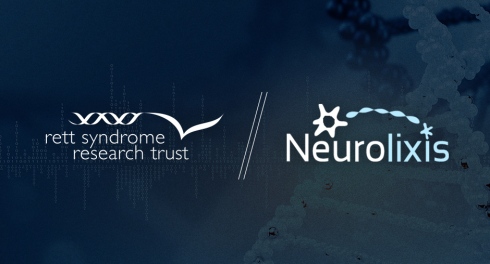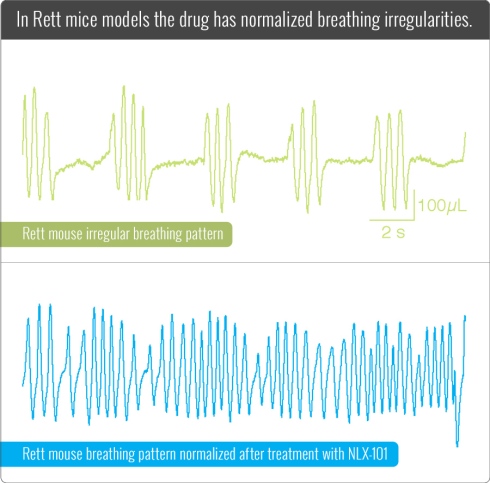You are currently browsing the monthly archive for June 2015.

People suffering from neurological disorders often have gastrointestinal issues. Rett Syndrome is no exception. Our kids are often tortured by constipation, reflux, gas pains and more. It should come as no surprise that the brain and the gut are connected, after all, the gut is lined with over 100 million neurons. Furthermore, the gut relies on and makes over 30 neurotransmitters, the same ones that are made in the brain. No wonder the gut is often coined “the second brain”.
During the past handful of years the scientific community has begun to appreciate the importance of a person’s microbiome (the population of more than 100 trillion microorganisms that live in our gut, mouth, skin and elsewhere in our bodies) and its influence on our health, including our mental health. Researchers are now exploring whether the microbiome of people with neurological disorders, including neurodevelopmental disorders, is unique. More importantly they are exploring whether manipulating the microbiome can improve neurological disease.
Last year RSRT awarded funding to Ali Khoshnan and Sarkis Mazmanian (whose cutting-edge research on microbiomes in autism is mentioned in the article below) at Caltech to characterize the gut microbiome of Rett mice and to see whether manipulating it with powerful probiotics could improve the symptoms. This work is currently ongoing.
The basis for Dr. Khoshnan’s line of exploration is beautifully explained in a New York Times article published recently. Click the image below to read the article:

Dear Friends,
I had a remarkable experience recently at an all-day meeting in Boston with Monica and the scientists of RSRT’s Gene Therapy Consortium that I wanted to share.
The Consortium is a collaboration of four labs that are developing a way to use gene therapy to treat or maybe even reverse Rett symptoms. I certainly wasn’t expecting to add anything to the conversation at this meeting, and truth be told I was a little nervous about being there. I’m a parent, not a scientist, and here I was going to a meeting with some of the world’s leading gene therapy experts. This was going to be a far cry from tenth-grade biology class, which was a long time ago. I went to the meeting to be a fly on the wall, learn what I could, and try to get a big-picture sense of progress. It turned out I got all this, but I also got much more.
It was amazing and even moving to see these scientists talking so enthusiastically about gene therapy as a potential way to treat or cure our daughters. It’s one thing to read about these projects; it’s quite another to be there and see ten scientists (the four principal scientists brought lab members with them) discussing and sharing their progress. I was struck by how the Consortium is a true collaboration. These scientists were sharing ideas and resources freely, and I know they returned to their labs with critical new information. Something else that surprised me was their compassion. Maybe I was expecting a sort of detached scientific approach from them. But that’s not at all what I saw. The Consortium members care deeply about their work and the impact it will have on those with Rett. They are constantly thinking about the details of gene therapy of course—the over-and under-expression of genes, DNA packaging, and vector optimization (a vector is the vehicle or “Trojan Horse” that carries a healthy gene to a mutated cell)—but it’s all driven by a desire to change lives. This was wonderful to see. We have Monica to thank for propelling these and other scientists to care about outcomes for our daughters as much as she and all of us parents do.
It was also clear at this meeting that meaningful progress was being made. I’ve learned enough about gene therapy to understand that the vectors that Consortium members are developing are critical. An effective vector will need to deliver just the right amount and parts of a gene, which is much easier said than done. At the meeting one of the Consortium scientists presented data on a vector tested in mouse models that looks promising. While this is very good progress, a lot more research lies ahead. Using gene therapy to treat Rett remains theoretical until the Gene Therapy Consortium members prove otherwise.
Science is complex and I know sometimes it’s hard to envision exactly how funding for it is used. At this meeting I had an acute sense of how every dollar contributed to RSRT matters—what I watched unfold that day simply would not have happened without the generosity of many people. It was another reminder of how grateful I am to everyone who supports RSRT. I feel lucky to have been there and to have had the chance to literally watch progress being made. The meeting renewed my excitement about the future for my daughter and all the other girls and women I’ve met with Rett Syndrome.
Tim Freeman

RSRT recently awarded $530,000 to Neurolixis, a small biotech firm in southern California that is developing the drug, NLX-101, to treat breathing abnormalities in people affected by Rett Syndrome. The drug targets a specific serotonin receptor (5-HT1A) located in regions of the brain that affect respiration, mood and cognition. It’s possible that, beyond breathing, the drug may also improve other core symptoms such as anxiety and movement disorders.
Neurolixis has already obtained Orphan Drug status for NLX-101 in both the US and in Europe. This designation provides the company with certain financial incentives as part of the Orphan Drug Act.
Previous RSRT funding to Neurolixis focused on studies to determine dosage levels for human studies. The next step is for Neurolixis to file an Investigational New Drug (IND) application with the FDA before clinical testing of the drug can begin.
The current award will be used to manufacture and characterize clinical supplies of NLX-101, and to prepare regulatory documents for submission to the FDA. The goal is to have the IND submitted to the FDA within a year. Once the IND is open, Neurolixis will test the safety, tolerability and pharmacokinetics (the time course of the drug’s absorption, bioavailability, distribution, metabolism and excretion) in healthy volunteers and in people with Rett.
By supporting this program, RSRT will help Neurolixis “de-risk” the project and make it more attractive to investors, who can support the next stage of development and expedite the process.

Dear Friends,
I am sitting in a plane on the tarmac at Chicago O’Hare, returning home from an amazing event that was spearheaded by a Rett family. The captain just announced that we are last in line for takeoff—could be an hour wait. Bummer! It’s a beautiful Friday afternoon and I was hoping to get home to my wife and daughter early to start the weekend.
But the delay gives me a chance to reflect a little on the last few months, which have been a whirlwind. Since the beginning of April, three new events have been held to raise funds for RSRT’s research—one outside of Boston, one in central Massachusetts, and one in Chicago. Two established events also were held near Baltimore and Phoenix. There were other successful efforts too—a friend of a Rett family did an online campaign for a 10K race she ran in Philadelphia; a Connecticut fourth-grader, inspired when she met a young girl with Rett Syndrome last year, raised over $1,500 for research.
It always feels like such an understatement to say how grateful I am to people who hold events or raise funds in other ways for RSRT. They are making possible research that will change so many lives, including my own daughter’s. No words can adequately express how I feel about that.
Each of these events was different. Some were hosted by parents of daughters with Rett, others were spearheaded by their friends. One was organized by Rett grandparents, another was led by a young man whose sister has Rett. They were in cities, suburbs and rural areas. They were cocktail galas or sit-down dinners. I wore a suit to one, jeans and a sports jacket to another, and shorts and a t-shirt to the race. No two events were the same. This, I’ve learned, is the beauty of events—they take on the personalities of the people who run them. They are whatever their hosts want them to be.
But there were similarities too in these events. At each one, people came together enthusiastically for the cause. Committees made up of family and friends had key roles in planning and running them. There was a shared ethos behind all of them of hope and optimism, and with good reason given the progress in research. The remarks made by parents and others were poignant, filled with the love they feel for their daughter, granddaughter, sister, or friend’s daughter; filled with a sense of empowerment and accomplishment that they are making a difference. They were tinged with sadness too of course—for what our girls have missed out on; for what their lives and our own might be like if it weren’t for a random and rare mutation on one gene.
I’ll admit something else—I’ve had fun at these events, and I think everyone involved with them has too. It has certainly been hectic and stressful sometimes, but mostly it has been fun. It feels slightly out of place to say that; after all we are raising funds to cure a disease that causes such severe disability and physical and mental pain. But it’s the truth. I’ve had a good time over the last two months. We families that have Rett in our lives need some silver lining, and this may be it. Events give us a chance to be together with family and friends, to meet other families that have the same challenges that we do. Rett Syndrome has given us a common enemy that together we can fight and ultimately beat.
This has been a rather long-winded way of trying to say one thing—Thank You. Thank you to everyone who puts so much energy into events and raising funds for RSRT and for your commitment to our daughters’ futures. Because of you, that future that we all want so badly is getting closer. We are very fortunate to count you as friends. And I am now being told to put away my laptop for the flight home.
Tim Freeman
We’re delighted to share this monumental honor with the Rett community. Our very own Monica Coenraads was awarded an honorary doctoral degree from UMass Medical School at their 2015 commencement ceremonies. It goes without saying that Monica’s knowledge, passion and courage provide not only the backbone but the spirit of our organization. We could think of nobody more deserving than Monica.
The chancellor put it best “A diagnosis that would have been an emotional setback for others, instead set the stage for your emergence as a central figure in one of the most successful advocacy stories in modern medicine.” She is truly a pioneer and our fiercest warrior leading the charge in the war on Rett.
This is a great honor not only for Monica but also for RSRT. It’s a testament to the respect she and the organization have in the scientific and medical community. It’s also further testament to why all of us Rett parents are fortunate that Monica does what she does.
-Tony Schoener, Chair, RSRT Board of Trustees








